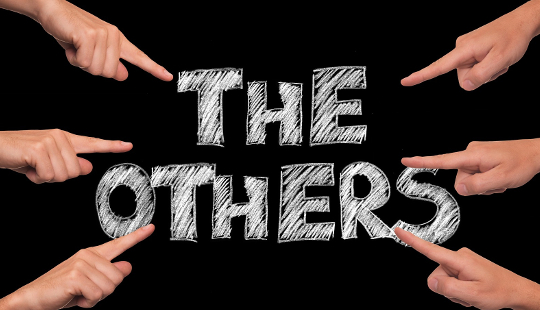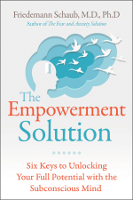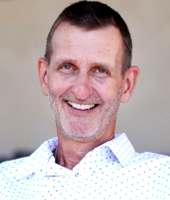
Image by Gerd Altmann
Becoming a victim wasn’t your choice. Remaining it is.
The Victim Pattern and the Illusion of Powerlessness
Since no one likes to be called a victim or looked at as one, your initial impulse may be to skip this chapter. However, as you’ll discover, the inner victim is not only a fundamental aspect of our psyche but also one of the most powerful.
Pretending that this part doesn’t exist would be like ignoring basic sensations such as hunger, tiredness, or pain. You may get away with it for a time, but eventually, you’ll pay the price for your neglect. Helping the victim evolve beyond its limitations by respecting, understanding, and addressing its needs is a crucial step in your empowerment journey.
Two Kinds of Victims: Real and Imagined
You could argue that there are two kinds of victimizations—real and imagined. Although, this distinction doesn’t seem to matter when you feel you’re a victim. The first type, the real victim, would be someone who’s experienced hardship or abuse, either at the hand of others or through traumatic ordeals. For example, children who are molested, bullied at school, or neglected by their parents. Victims of crimes, domestic violence, and severe accidents. Those who’ve lost their loved ones or their homes in a natural disaster. And, of course, the millions of refugees who are desperately seeking a safe place to exist, like victims of wars or brutal regimes that have no regard for human life.
The second type, the imagined victim, is as ancient as the story of Adam and Eve. When a serpent persuaded Eve to eat from the forbidden tree of knowledge, Eve also gave Adam a piece of that fruit. When God questioned the two, Adam blamed Eve, and even God, since the woman was given to him by the creator. Eve accused the serpent of being the real offender. Both Adam and Eve were unwilling to take responsibility for their actions. Instead, they saw themselves as innocent victims, ultimately getting themselves expelled from the Garden of Eden.
The Imagined Victim Is Triggered by Feeling Out of Control
The imagined victim type could also be called the victim of our perceived limitations because it gets triggered when we feel out of control and unable to change the situation we’re in. It’s this type of victim most of us are familiar with. Let’s be honest, how many times a week do you feel like a victim?
As our lives are overtaken by busyness and obligations, and our to-do lists grow longer and longer, the mountain of unfinished tasks seems to overshadow each moment increasingly. At some point, everything becomes too much and too difficult to handle, and we don’t know where to begin or what to do. Feeling completely overwhelmed, we can quickly become victims of our circumstances. We interpret small mishaps and incidents—spilling a glass of milk, misplacing a bill, being ignored by the barista in the coffee shop—as personal attacks by humanity, life, or the universe that push us over the edge into the abyss of despair and powerlessness.
We can also feel victimized by our job, the economy, the government, the dog next door, our parents, or our kids. Even our own emotions or our body, if they don’t comply and change the way we imagine, can become perpetrators who assault and imprison us.
Whether real or imagined, the problem with staying in the victim role is that it can ultimately lead to self-victimization. As we continue to identify ourselves with the past, the circumstances we are in, or those who did us wrong, we stay stuck in the notion that we can’t have the life we want and are bound to get hurt and let down again. We become frustrated and ashamed for being weak and unable to take control. We become rigid and righteous toward others and ourselves and eventually shut down because we lose trust and hope for the future.
As with all survival patterns, when you approach life from the mindset of the inner victim, you ultimately lose your power and, with that, a sense of confidence, joy, and purpose.
4 Ways You Know You’re In Victim Mode
You may still sit on the fence about whether you have an inner victim and whether this part of you has kept you in survival mode. So let’s take a closer look at the typical signs of living in the victim pattern.
1. You’re Stuck in the Past
Like most people, you may have gone through some hardship, traumas, and accidents. You may have been hurt, insulted, betrayed, or disappointed by others. But while those who have treated you poorly may have forgotten all about you and moved on, your inner victim continues to suffer from the pain they caused you.
Any time a situation arises that makes you feel similarly disrespected or mistreated, you replay in classic “poor me” fashion this and all the other injustices that occurred to you, trying to find answers for plaguing questions such as “why?” and “why always me?”
The past, especially our early years, is the reference book for our subconscious mind and its survival patterns. This is why relatively harmless situations that an adult mindset could easily disregard can trigger a full-blown victim response, making you feel as small and powerless as a child. But don’t get frustrated with yourself for reacting in such a disempowering and immature way. Try to appreciate that your subconscious hasn’t learned yet how to respond to these triggering situations in a more self-assured manner.
2. You Justify Your Misery
When you’re in victim mode, you may become righteous and even entitled to feel sorry for yourself. You tell yourself and anyone who stays around to listen to you that you genuinely don’t have choices, that the unfortunate circumstances you’re in are bigger than you, and that how people treat you is neither your fault nor anything you can change.
When a well-meaning friend challenges your bleak assessment, you dismiss their advice and support, even though deep inside you know they may be right. Instead, you angrily defend your victimhood and insist that you’ve tried everything to improve your situation, without success. Hence, there’s no hope for betterment.
Although this reaction mode may appear rather stubborn and short-sighted, have compassion for your inner victim. For it, the idea of stepping out of powerlessness and taking responsibility is often too scary to even consider.
3. Your Body or Your Emotions Become the Enemy
People who feel assaulted and held hostage by their anxiety or depression, an uncontrollable barrage of intrusive thoughts, or by a chronic physical illness, often struggle the most because there’s no place for them to escape from their perpetrator.
4. You Need a Villain and Become the Perpetrator—of Both Others and Yourself
For the inner victim to justify its worldview and ultimately its existence, it depends on finding its counterforce—the villain. The need for a villain often leads to distorting and misinterpreting normal relationships as unsafe, unfair, or abusive. You may feel victimized by the expectations of your spouse and your kids. Or you may turn your friends, family members, or counselors into culprits, because, as their well-intended advice “clearly proves,” they don’t understand or care about you.
In the victim role, you take everyone and everything personally. Any perceived wrongdoing is an indication that you’ve pulled the short end of the stick in life and that the entire universe is against you, and you aren’t destined to be happy.
You could assume that being in victim mode makes you kinder and more compassionate toward yourself. However, as you’ve probably experienced many times, your inner victim can be quite judgmental and attack you with self-loathing and disdain. From its perspective, the world is categorized into black and white, good and bad, and powerful and powerless (like yourself).
I can imagine that at times when your inner victim takes the reins, you’ve found yourself trapped in a self-defeating paradox. On the one hand, you have the anger-fueled desire to lash out or push away those who hurt and disrespect you. On the other hand, you attack yourself for all the flaws and faults that explain why people mistreat you in the first place. The question is, does your inner victim know that it prolongs the cycle of abuse by villainizing others and battering itself?
Why The Victim Avoids Change and Responsibility
In contrast to the two other patterns in the avoider mode—the invisibility and the procrastinator—the victim pattern usually doesn’t result in a feeling of security, control, or the sense of having dodged a bullet. In the victim role, you continue to suffer the consequences of your past. Every insult, letdown, or deception is securely stored in your memory and kept in the forefront as a cross-reference for any current interaction or situation in which you may find yourself.
The problem is that each time you feel you’ve been wronged and you vow never to forget what happened to you, you are so focused on the past hurt that you become unaware of your present responsibility to heal your wounds and improve your life.
By holding on to the notion that your suffering affords you the right to be angry, anxious, depressed, hurt, and ultimately stuck, your inner victim gives you permission to stay the same—and in the extreme, never grow beyond the status of a powerless child.
The Victim’s Attachment to Misery Serves Three Purposes.
One: By refusing to outgrow the disempowering patterns of the past, you can avoid a more proactive, self-determined, and mature role in your life. In the mind of the inner victim, taking responsibility comes with an inherently greater risk of failure, judgment, and pain.
Two: The avoidance of change serves as a sort of entitlement to be treated by others with a soothing mixture of support, sympathy, and lack of expectations. Your inner victim yearns for acknowledgment for its suffering and ultimately hopes that someone will come to the rescue.
Anyone who doesn’t want to buy into their victimhood is declared a villain who can’t be trusted and needs to be avoided. In this regard, the victim can be quite effective in controlling others. Some try to get the attention they want by relentlessly beating the drum of their hardship, nagging, throwing temper tantrums, or making ultimatums and threats. The secondary victims of such campaigns are often perturbed friends and family members, who discard their own reasonable boundaries in the desperate effort to appease the moaning victim.
Three: The last reason why the inner victim wants you to stay in a self-made cocoon of hurt, resentment, blame, and imagined impotence may be the most disempowering and difficult to admit. The victim avoids taking responsibility because it assumes that the villain would get off the hook this way.
Some of my clients admitted they didn’t want to change, heal, and feel better because if they did, their abusive or neglectful parents could convince themselves they’d done an excellent job raising their child. Others realized they were clinging on to the slim but persistent hope that one day the people who’d hurt them would miraculously admit their guilt and repent for their wrongdoings.
Since they’d never received an acknowledgment or apology from their perpetrators, their inner victim refused to heal the wounds of the past until the debt was paid. In a similar vein, some of my clients who’d been betrayed, mistreated, or dumped by their partners held on to their pain because they didn’t want to abandon the dream that their misery could soften the hearts of their exes and lead them back to them.
Prerequisite to Letting Go of Victim Survival Patterns
To let go of their victim survival patterns, all these clients needed first to accept a simple but hard-to-swallow truth. The only certain outcome they would get from waiting for a magical turnaround was that they would continue to put their future and their opportunities for more peace, joy, and fulfillment into the hands of those who didn’t seem to care about them in the first place.
Despite its protective intentions, the self-destructive downward spiral of the victim pattern is pretty obvious: you continue to identify yourself with the past and those who did you wrong. You stay stuck believing that you have been dealt a rotten hand, that life is not fair, and that you’re bound to get hurt, abused, and betrayed again. So you treat others with suspicion, ready to push anybody away at the first inkling of disappointment.
In the end, the limiting beliefs of the victim become a self-fulfilling prophecy, and you find yourself isolated, misunderstood, and powerless.
Copyright ©2023. All Rights Reserved.
Reprinted with permission of Destiny books,
an imprint of Inner Traditions Intl.
Article Source:
The Empowerment Solution: Six Keys to Unlocking Your Full Potential with the Subconscious Mind
by Friedemann Schaub
 In this step-by-step guide, Friedemann Schaub, M.D., Ph.D., explores how to break free from the six most common survival patterns—the victim, invisibility, the procrastinator, the chameleon, the helper, and the lover—by engaging the part of the mind that created them in the first place: the subconscious.
In this step-by-step guide, Friedemann Schaub, M.D., Ph.D., explores how to break free from the six most common survival patterns—the victim, invisibility, the procrastinator, the chameleon, the helper, and the lover—by engaging the part of the mind that created them in the first place: the subconscious.
Providing research-backed insights and brain- rewiring methods based on his 20 years’ experience, Dr. Friedemann details how, through activating the healing power of the subconscious, you can throw off the shackles of these self-sabotaging patterns and “flip” them into the six keys to self-empowerment, allowing you to take self-reliant ownership of your life.
Click here for more info and/or to order this paperback book. Also available as a Kindle edition.
About the Author
 Friedemann Schaub, M.D., Ph.D., a physician with a Ph.D. in molecular biology, left his career in allopathic medicine to pursue his passion and purpose of helping people overcome fear and anxiety without medication. For more than twenty years, he has helped thousands of his clients worldwide to break through their mental and emotional blocks and become the empowered leaders of their lives.
Friedemann Schaub, M.D., Ph.D., a physician with a Ph.D. in molecular biology, left his career in allopathic medicine to pursue his passion and purpose of helping people overcome fear and anxiety without medication. For more than twenty years, he has helped thousands of his clients worldwide to break through their mental and emotional blocks and become the empowered leaders of their lives.
Dr. Friedemann is the author of the award-winning book, The Fear and Anxiety Solution. His newest book, The Empowerment Solution, focuses on activating the healing power of the subconscious mind to switch out of stress- and anxiety-driven survival mode and make authenticity and confidence the everyday way of being.
For more details about his work, please visit www.DrFriedemann.com


























